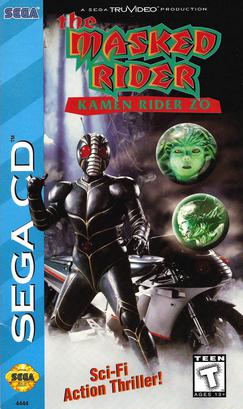Reception
Review scores for The Masked Rider were mixed. Critics disagreed on the overall quality of the game due to its reliance on full-motion video and its limited playability as an interactive movie. Many writers compared it to the Sega CD version of Mighty Morphin Power Rangers, another interactive movie based on a tokusatsu franchise ( Super Sentai ). Chris Bieniek of the magazine VideoGames was complimentary of the monster footage and of Sega of America's willingness to release a localized version of the Kamen Rider adaptation for the franchise's North America fanbase. However, he stated that like Mighty Morphin Power Rangers, The Masked Rider was not as much fun to play as it was to watch. [11] The Brazilian magazines VideoGame and Gamers were both highly complimentary of its visuals and sound though the latter publication subtracted praise for the game's lack of challenge. [13] [15] Likewise, GamePro , Sega Pro , and AllGame all commended its presentation as an FMV game but felt it lacked replay value due to its cinematic structure. [4] [8] [10]
Laurie Yates of Electronic Games conversely criticized its FMV sequences as "visually tired and fuzzy" but similarly concluded that this aspect was "sloppy and haphazard for a piece of software that is more movie than game." [12] Next Generation proclaimed, "It's guy-in-rubber suit action at the "Ultraman" level which has a certain appeal to some folks I know. But as a game, it's almost worthless." [3] The French magazine Joypad found the costumes cheesy, the special effects tasteless, and its stupidity proportional to its fun factor. The reviewer assumed the game would be a hit in Japan and that it would never be released in Europe. [14]
This page is based on this
Wikipedia article Text is available under the
CC BY-SA 4.0 license; additional terms may apply.
Images, videos and audio are available under their respective licenses.
